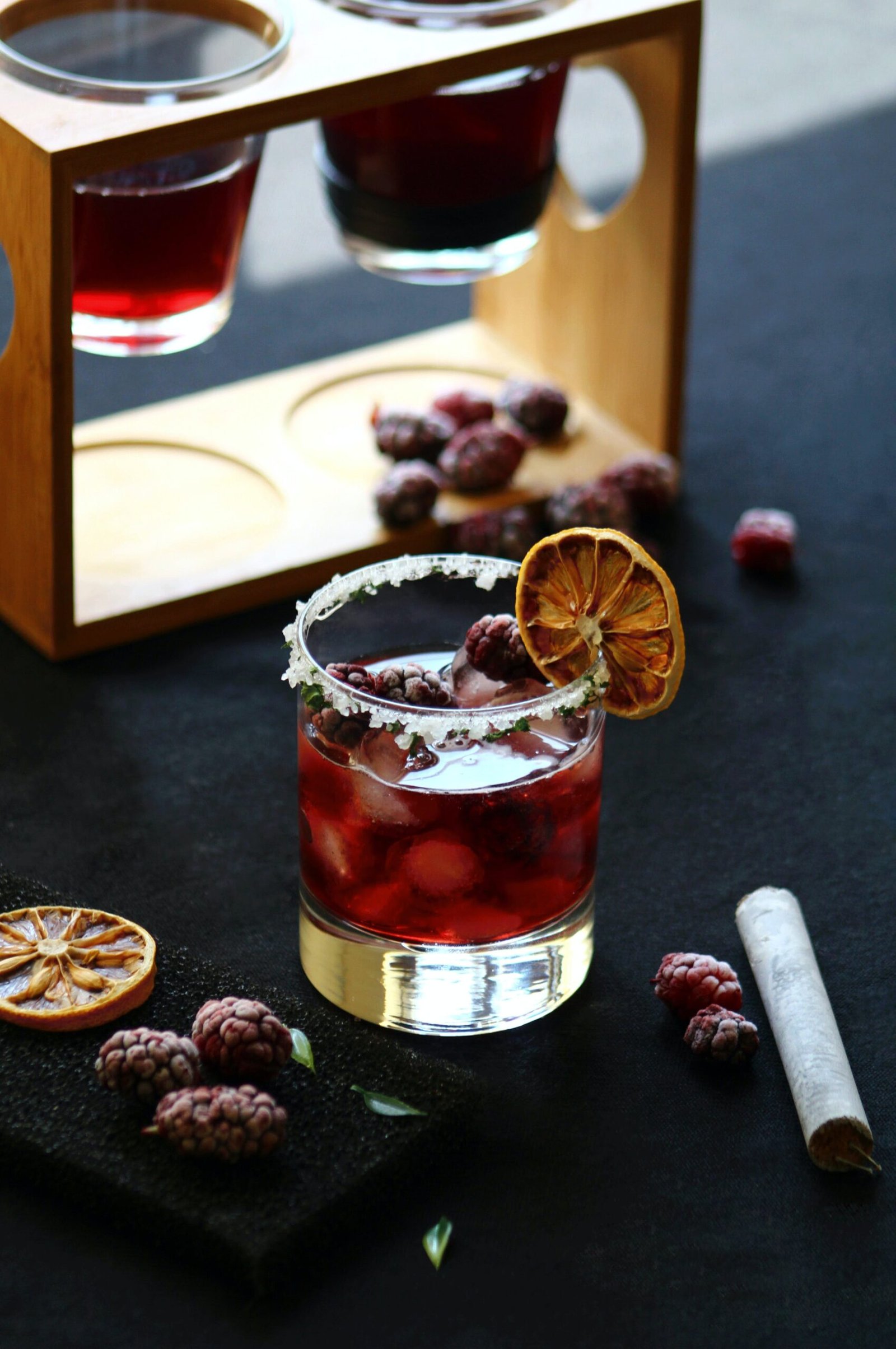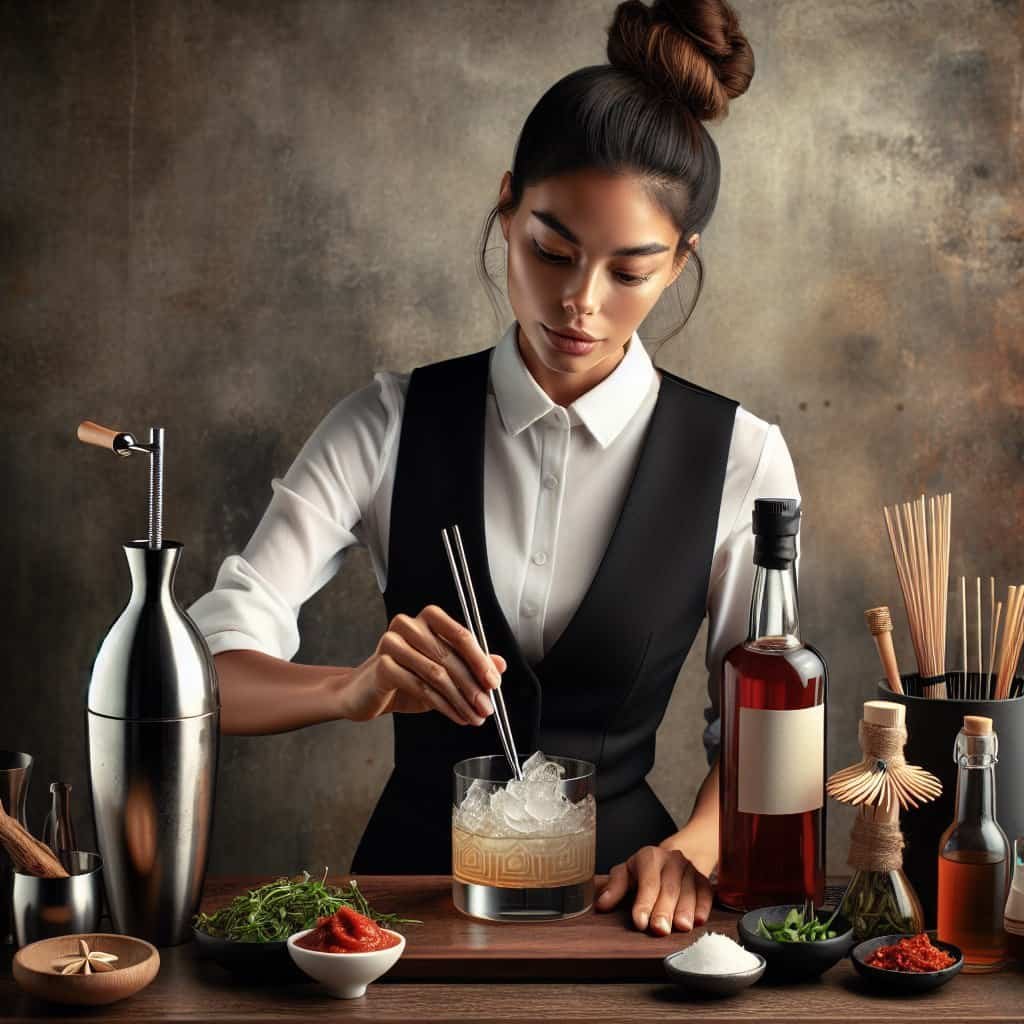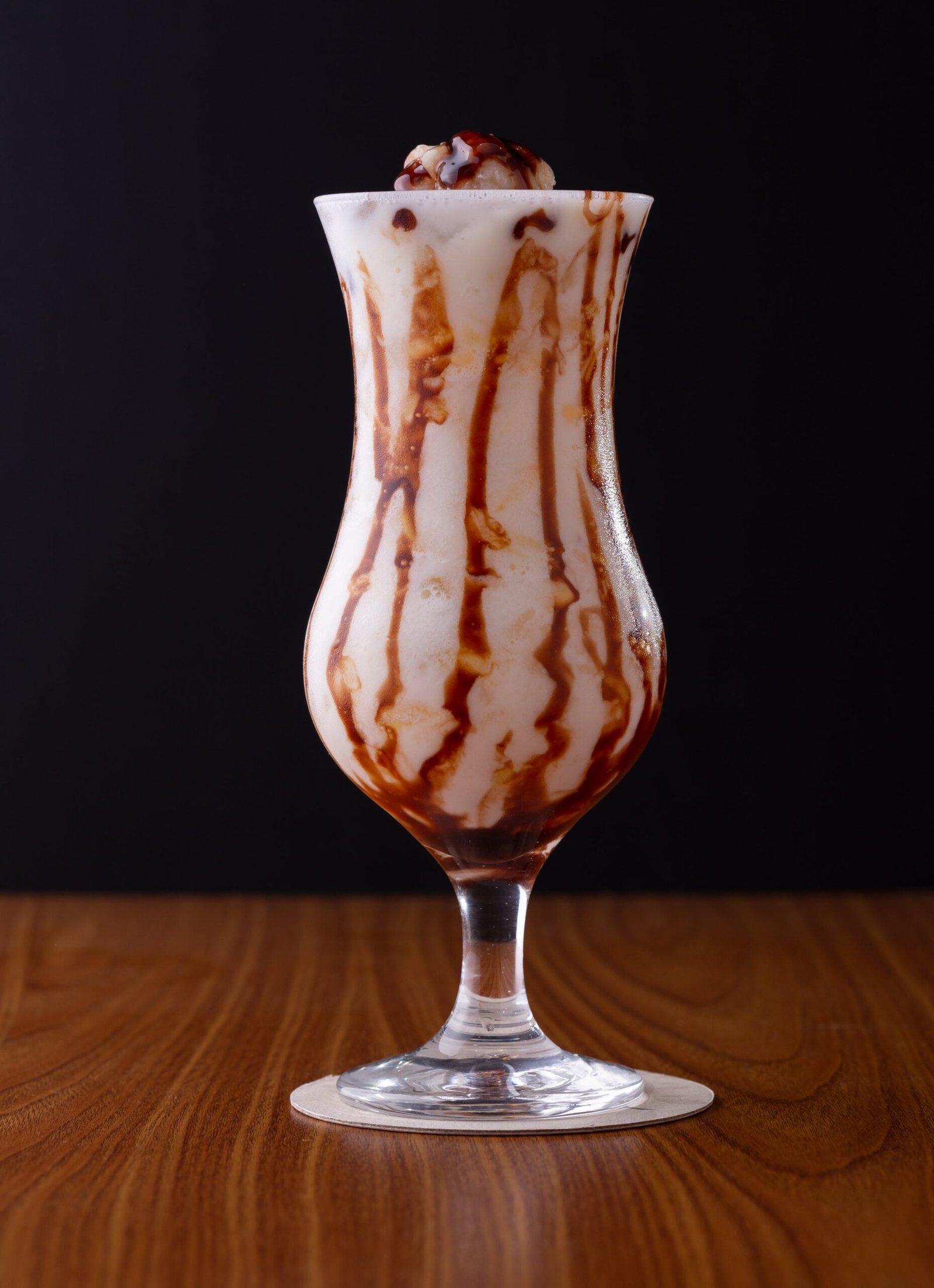Imagine transforming your ordinary cocktail into a sensational blend of flavors by adding a touch of Korean essence. From the vibrant punch of gochujang to the subtle aroma of yuzu, the possibilities are endless. Embark on a culinary adventure as you explore avant-garde techniques for incorporating Korean ingredients into your cocktails, embracing a fusion of East and West that will leave your taste buds craving for more.

Unique Korean Ingredients for Cocktails
Korea has a rich culinary tradition with a variety of unique ingredients that can add depth and complexity to cocktails. Whether you’re a seasoned mixologist or a budding home bartender, exploring traditional Korean ingredients can open up a whole new world of flavors for your drinks. From unusual herbs to fermented ingredients, there are plenty of options to experiment with. So let’s dive into the world of Korean cocktail ingredients and discover how they can elevate your libations.
Exploring Traditional Korean Ingredients
When it comes to Korean cocktails, it’s important to start with the basics. Traditional Korean ingredients can add a distinct and authentic touch to your drinks. One popular ingredient is yuzu, a citrus fruit with a fragrant aroma and tangy flavor. Its zest and juice can be used to add a refreshing twist to classic cocktails like a Martini or a Margarita.
Another noteworthy ingredient is Korean red ginseng, which is known for its health benefits and earthy taste. Infusing red ginseng into spirits like vodka or whiskey can create a unique base for cocktails, adding depth and complexity to the overall flavor profile.
Unconventional Korean Ingredients to Experiment With
For those looking to push the boundaries of cocktail experimentation, there are plenty of unconventional Korean ingredients to explore. Take gochujang, for example, a spicy fermented chili paste commonly used in Korean cuisine. Adding a small amount of gochujang to a classic Bloody Mary can give it a fiery kick and a distinctive Asian twist.
Other unconventional ingredients to consider include ssamjang, a savory and spicy dipping sauce, and doenjang, a fermented soybean paste. Both can be used to add umami flavors to cocktails, creating a unique culinary experience for your taste buds.
Incorporating Unique Flavors into Cocktails
Once you have familiarized yourself with traditional and unconventional Korean ingredients, it’s time to take your cocktails to the next level by incorporating these unique flavors. One way to do this is by infusing Korean flavors into classic cocktails like the Martini. Instead of using traditional vermouth, try using a splash of plum wine or makgeolli, a traditional Korean rice wine. The result is a Martini with a subtle yet distinct hint of Korean sweetness.
Another creative way to incorporate Korean flavors is by using herbal liquors in an Old Fashioned. Instead of using the usual whiskey or bourbon, try substituting it with Korean herbal liquors like yuzu liquor or ginseng liquor. These herbal liquors add a complex and aromatic layer to the classic cocktail, elevating its flavor profile and giving it a uniquely Korean twist.
For those who enjoy a margarita, why not try a Korean-inspired version? Use Korean citron tea instead of traditional lime juice, and add a touch of gochujang for a spicy kick. The result is a tangy, spicy, and oh-so-refreshing margarita that will surely impress your guests.
The Art of Fermentation in Cocktail Making
Fermentation is a traditional Korean culinary technique that can also be incorporated into cocktail making. By harnessing the flavors of fermented Korean ingredients, you can add a depth and complexity to your drinks that is truly unique. Here are some ways to utilize fermentation in your cocktail creations.
Harnessing the Flavors of Fermented Korean Ingredients
Korea is famous for its fermented foods, such as kimchi and soybean paste. These fermented ingredients can be used to create flavorful infusions and syrups for cocktails. For example, blending a small amount of kimchi with vodka or gin can result in a savory and tangy base for a Bloody Mary or a spicy martini.
Another fermented ingredient to experiment with is makgeolli, a traditional Korean rice wine. Makgeolli has a creamy texture and a slightly sweet, tangy flavor. Incorporating makgeolli into cocktails can add a unique twist, especially when combined with fruity flavors like peach or apple.
DIY Fermentation Techniques for Cocktail Ingredients
If you’re feeling adventurous, you can also try your hand at DIY fermentation to create your own unique cocktail ingredients. For instance, fermenting Korean chili peppers in a jar with salt and sugar can yield a spicy and flavorful chili-infused vodka or rum. Similarly, fermenting Korean fruits like persimmons or plums can result in delicious fruit-infused spirits that can be used as bases for cocktails.
Incorporating Fermented Flavors into Mixed Drinks
Once you have your fermented ingredients ready, the possibilities for creating mixed drinks are endless. Try using fermented fruit juices as a base for cocktails, or experiment with adding a splash of fermented soybean paste to a savory cocktail. The fermented flavors will bring a complex and robust taste to your drinks, making them truly stand out.

Innovative Cocktail Garnishes from Korea
Garnishes are not just for visual appeal; they can also enhance the flavor and aroma of a cocktail. Korean cuisine offers a wide range of unique fruits, herbs, and plants that can be used as innovative cocktail garnishes. Let’s explore some of these options and unleash your creativity in the garnishing department.
Using Traditional Korean Fruits as Garnishes
Korean cuisine is famous for its variety of fruits, many of which can be used as eye-catching cocktail garnishes. One such fruit is the persimmon, which has a beautiful orange color and a sweet, honey-like flavor. Slice a thin piece of persimmon and use it as a garnish for a whiskey sour or an Old Fashioned. The sweet flavor of the persimmon will complement the rich flavors of the cocktails perfectly.
Another fruit to consider is the Korean pear, known for its crisp texture and juicy, sweet taste. Cut a slice of Korean pear and use it as a garnish for a sparkling wine cocktail or a gin and tonic. The pear’s refreshing flavor will provide a delightful contrast to the bubbly and botanical notes of the drinks.
Experimenting with Unique Korean Herbs and Plants
Korean cuisine also boasts a wide array of unique herbs and plants that can add an intriguing twist to your cocktail garnishes. One such herb is perilla leaves, which have a distinct flavor similar to mint and basil. Use a perilla leaf as a garnish for a mojito or a gin and tonic to add an herbal and aromatic touch to your drinks.
Another interesting plant to experiment with is mugwort, a herb with a grassy and slightly bitter taste. Dry the mugwort leaves and use them as a garnish for a tequila-based cocktail or muddle them to infuse their flavors into the drink. The subtle bitterness of the mugwort will provide a delightful balance to the sweetness of the cocktail.
Creating Visually Stunning Garnishes Inspired by Korean Cuisine
In addition to fruits, herbs, and plants, taking inspiration from the visually stunning presentation of Korean cuisine can elevate your cocktail garnishes to a whole new level. For example, you can create a garnish inspired by the famous Korean dish bibimbap, which is traditionally served in a bowl with an assortment of colorful ingredients.
To mimic the visual appeal of bibimbap, arrange small pieces of different colored fruits, such as strawberries, kiwis, and blueberries, on a skewer and place it across the rim of a cocktail glass. This garnish not only adds a pop of color but also pays homage to the vibrant spirit of Korean cuisine.
Korean-Inspired Infusions and Syrups
Infusions and syrups are essential components of any well-crafted cocktail. By infusing spirits with Korean tea leaves or herbs, or by creating Korean-inspired simple syrups, you can add unique flavors and aromas to your drinks. Let’s explore these techniques in more detail.
Infusing Spirits with Korean Tea Leaves or Herbs
Korean tea is renowned for its diverse flavors and health benefits. By infusing spirits like vodka, gin, or tequila with Korean tea leaves or herbs, you can create a whole new dimension of taste in your cocktails. One popular option is to infuse green tea leaves into vodka to add a subtle, earthy note to a martini or a refreshing twist to a mojito.
Another creative infusion idea is to steep roasted barley tea in whiskey to create a rich and nutty flavor profile. This infusion can be used as a base for an old-fashioned or a whiskey sour, adding depth and complexity to the drinks.
Creating Korean-Inspired Simple Syrups for Cocktails
Simple syrups are a staple in cocktail making, and by infusing them with Korean flavors, you can create unique and delicious syrups that perfectly complement your drinks. One simple syrup variation is to blend honey with Korean citron tea, resulting in a syrup with a vibrant citrus flavor that pairs well with vodka or gin.
Another syrup option is to combine Korean red ginseng extract with simple syrup, creating a sweet and earthy syrup that can be used in a variety of cocktails. Whether you’re making a margarita or a whiskey cocktail, this ginseng-infused syrup will add a distinct Korean touch.
Using Korean Fruit Juices as Cocktail Bases
Korean fruits are not only great for garnishes but also for creating flavorful bases for cocktails. Using Korean fruit juices as the main ingredient in your cocktail can provide a fresh and natural sweetness that pairs perfectly with spirits. For example, using fresh raspberry juice in a vodka cocktail will create a vibrant and fruity drink that is perfect for a summer gathering.
Another option is to use Korean persimmon juice as a base for a spiced rum cocktail. The rich and complex flavors of the persimmon will blend beautifully with the warm and aromatic notes of the rum, creating a truly indulgent cocktail experience.

Balancing Sweet and Savory Flavors in Korean Cocktails
One of the hallmarks of Korean cuisine is the balance between sweet and savory flavors. To create authentic Korean cocktails, it’s important to understand and incorporate this harmony into your drinks. By exploring the umami flavors and finding the perfect balance of sweetness and savoriness, you can create memorable and well-rounded cocktails.
Exploring the Harmony of Sweet and Savory in Traditional Korean Cuisine
Traditional Korean cuisine is all about balance, and this is evident in the way sweet and savory flavors are harmoniously combined. Take jangajji, for instance, which are pickled vegetables that are slightly sweet and tangy. Incorporating jangajji into a cocktail, whether as a garnish or by using the pickling liquid as an ingredient, can add a unique umami flavor that balances the sweetness of the spirits.
Similarly, exploring the flavors of Korean barbecue can inspire you to create cocktails that balance sweet and savory. The marinades used in Korean barbecue often have a sweet and savory profile, which can be replicated in cocktails by using ingredients like soy sauce, sesame oil, or Korean plum extract. These ingredients can be used sparingly to add depth and complexity to the drinks, while still maintaining a delicate balance of flavors.
Incorporating Umami Flavors into Cocktails
Umami is often referred to as the fifth taste, and it plays an important role in Korean cuisine. To create umami-rich cocktails, consider using ingredients like fermented soybean paste (doenjang) or fish sauce. These ingredients can be used in small amounts to add a savory and slightly salty undertone to your drinks.
For instance, a small splash of fish sauce in a Bloody Mary or a Caesar cocktail can add depth and umami to the overall flavor profile. Similarly, a touch of doenjang in a savory cocktail like a dirty martini can take it to a whole new level.
Finding the Perfect Balance of Sweetness and Savoriness
Finding the perfect balance of sweetness and savoriness in cocktails can be a delicate dance. It’s all about experimentation and tasting along the way. Start by adding small amounts of savory ingredients and gradually adjust the proportions until you achieve the desired balance.
Remember, it’s important to let the spirits shine through while still highlighting the unique Korean flavors. This will ensure that your cocktails are well-balanced and enjoyable to drink.
Korean-Inspired Signature Cocktails
If you’re looking to create signature cocktails with a Korean twist, you have a world of possibilities at your fingertips. By using Korean spirits as a base, incorporating Korean culinary traditions, or even fusing Korean and international influences, you can craft unique cocktails that are sure to impress.
Crafting a Unique Cocktail Using Korean Spirits as a Base
Korean spirits like soju and makgeolli offer a fantastic base for creating signature cocktails. Soju, a clear and slightly sweet distilled liquor, can be used as a substitute for vodka or gin in classic cocktails. For example, a soju-based mojito with muddled Korean melon and lime juice can be a refreshing and light option.
Makgeolli, with its creamy texture and slightly sweet flavor, can also be a versatile base for creative cocktails. Mixing makgeolli with peach liqueur and a splash of soda water can create a delightful and fruity cocktail that highlights the unique characteristics of the rice wine.
Designing a Cocktail Inspired by Korean Culinary Traditions
Korean culinary traditions offer a wealth of inspiration when it comes to designing cocktails. Take, for instance, the iconic Korean barbecue. One can create a cocktail inspired by the flavors of barbecue marinades, combining the smokiness of bourbon with a sweet and tangy Korean plum syrup and a dash of sesame oil.
Another culinary tradition to explore is Korean street food. The vibrant and diverse flavors of dishes like tteokbokki or bindaetteok can be translated into cocktails by using ingredients like chili-infused vodka or mung bean syrup. These cocktails will not only capture the essence of Korean street food but also provide a unique and memorable drinking experience.
Creating a Fusion Cocktail with Korean and International Influences
Korean cocktails don’t have to be limited to traditional Korean ingredients. Exploring the fusion of Korean and international flavors can yield exciting results. For example, combining Korean pear juice with ginger beer and a splash of Irish whiskey can create a refreshing cocktail that merges Korean and Irish influences.
Alternatively, fusing Korean tea with Mexican tequila and a hint of lime can result in a cocktail that blends the earthy and mellow notes of Korean tea with the vibrant and citrusy flavors of Mexico. The key here is to experiment and strike a balance between the different flavor profiles to create a harmonious and enjoyable drink.

Experimenting with Korean Tea Cocktails
Korea has a rich tea culture, and exploring the diverse world of Korean teas can open up a whole new realm of cocktail possibilities. By infusing Korean teas into cocktails, you can add depth, aroma, and a distinct Korean twist to your libations. Here are some ways to experiment with Korean tea cocktails.
Exploring the Diverse World of Korean Teas
Korean teas come in a wide variety, each with its own unique flavor profile and characteristics. For example, green tea (nokcha) has a delicate and grassy taste, while roasted barley tea (boricha) has a nutty and slightly bitter flavor. By exploring different Korean teas, you can find the perfect match for your cocktails.
Other options to consider include persimmon leaf tea (gotgam cha), which has a subtle sweetness, and omija tea, which has a complex and fruity flavor. These teas can add depth and complexity to your cocktails, making them truly extraordinary.
Infusing Korean Teas into Cocktails
Infusing Korean teas into cocktails is a straightforward yet effective way to introduce their flavors. You can make a strong tea concentrate by steeping the tea leaves in hot water for a longer period. This concentrate can then be used as a base for various cocktails.
For instance, a green tea concentrate can be used to make a refreshing green tea martini by combining it with vodka or gin and a touch of honey syrup. Similarly, a roasted barley tea concentrate can be mixed with whiskey or rum to create a warming and comforting cocktail with a subtle nutty note.
Creating Innovative Tea-Based Cocktails with a Korean Twist
Once you have your tea base ready, it’s time to get creative and craft innovative tea-based cocktails with a Korean twist. For example, combining omija tea with citrus-infused vodka and a splash of sparkling water can create a vibrant and effervescent cocktail that showcases the complex flavors of the tea.
Another idea is to create a cocktail using persimmon leaf tea, soju, and a squeeze of lemon juice. This combination results in a light and refreshing cocktail with a subtle sweetness that is perfect for a summer day.
Exploring Fermented Korean Beverages as Mixers
Korea is famous for its fermented alcoholic beverages like makgeolli, soju, and takju. These traditional drinks can not only be enjoyed on their own but can also be utilized as mixers in cocktails, providing unique flavors and a touch of Korean authenticity. Let’s explore the various ways you can incorporate fermented Korean beverages into your cocktails.
Utilizing Traditional Korean Alcoholic Beverages as Mixers
Makgeolli, a milky and slightly sweet rice wine, is incredibly versatile and can be used as a mixer in cocktails. Its natural effervescence and creamy texture make it a great substitute for sparkling wine or soda water. For instance, mixing a fruity liqueur like peach schnapps with makgeolli and a squeeze of citrus juice can yield a refreshing and lively cocktail that highlights the unique qualities of the rice wine.
Soju, a clear and neutral distilled liquor, can also be utilized as a mixer. It pairs well with various flavors and can be the perfect base for cocktails like mojitos or margaritas. Replacing traditional spirits like vodka or tequila with soju can add a Korean twist to classic cocktails, allowing you to explore new and exciting taste combinations.
Discovering the Unique Flavors of Makgeolli, Soju, and Takju
To fully appreciate the unique flavors of fermented Korean beverages, it’s important to understand their characteristics. Makgeolli, as mentioned earlier, has a creamy texture and a slightly sweet taste with a touch of acidity. Soju, on the other hand, is known for its clean and crisp flavor, similar to vodka but with a hint of sweetness. Takju, another type of rice wine, is typically stronger and has a richer, more robust flavor compared to makgeolli.
By experimenting with these different fermented beverages as mixers, you can create cocktails with complex flavors that reflect the distinct Korean drinking culture.
Blending Fermented Korean Drinks with Other Cocktail Ingredients
Once you have the fermented Korean beverages ready, blending them with other cocktail ingredients is the key to creating well-balanced and flavorful drinks. For example, mixing soju with fresh watermelon juice and a splash of lime can result in a light and fruity cocktail that is perfect for warm summer evenings.
Another idea is to combine takju with a spiced liqueur like cinnamon schnapps and apple cider. The rich flavors of the rice wine blend harmoniously with the warm spices and apple sweetness, creating a cocktail that is perfect for cozy fall nights.

Creating Korean Cocktail Menus and Pairings
Designing a cohesive cocktail menu and pairing the cocktails with traditional Korean dishes can create an immersive and unforgettable experience for your guests. By considering the flavors and profiles of both the cocktails and the dishes, you can create a harmonious marriage of taste sensations. Here’s how you can create a Korean-inspired cocktail menu and pair the drinks with traditional Korean dishes.
Designing a Korean-Inspired Cocktail Menu
A well-crafted cocktail menu should take into account the diverse tastes and preferences of your guests. Start by offering a variety of cocktail options, from light and refreshing to bold and complex. Consider incorporating signature cocktails that feature Korean spirits or ingredients, as well as classic cocktails with a Korean twist.
To give your menu a cohesive theme, you can also choose to highlight specific Korean flavors or ingredients throughout the drinks. For example, if you’re using Korean tea as a key ingredient, create a section dedicated to tea-based cocktails, featuring different teas and their unique flavor profiles.
Pairing Korean Cocktails with Traditional Korean Dishes
Pairing cocktails with traditional Korean dishes can be an exciting and adventurous experience. Consider the flavors, textures, and characteristics of both the cocktails and the dishes to create pairings that complement and enhance each other.
For example, a light and citrusy seafood ceviche can be paired with a Korean-inspired mojito made with soju and yuzu juice. The bright and zesty flavors of the mojito would bring out the freshness of the seafood, creating a harmonious combination of flavors.
Similarly, a savory and spicy dish like Korean fried chicken can be paired with a refreshing cucumber and soju-based cocktail to balance out the heat. The cool and crisp flavors of the cocktail would help cleanse the palate between each flavorful bite of the chicken.
Creating Cohesive Flavor Profiles in Korean Cocktail Pairings
When creating cocktail pairings, it’s important to consider the overall flavor profile and balance of the menu. Aim to offer a range of flavors, from sweet and fruity to savory and aromatic, and ensure that the cocktails and dishes complement each other.
For instance, if you have a cocktail with bold and complex flavors, like a spiced rum cocktail with ginger and cinnamon, consider pairing it with a rich and hearty dish like bulgogi, a marinated beef dish. The robust flavors of the cocktail would stand up well to the intensity of the dish, creating a cohesive and memorable dining experience.
Remember, cocktail pairings are about enhancing and elevating the dining experience, so don’t be afraid to experiment and discover new and exciting combinations.
Incorporating Korean ingredients into cocktails can be a fun and creative way to explore the vibrant flavors of Korean cuisine. Whether you’re a seasoned mixologist or just starting your journey into the world of cocktails, the unique ingredients and techniques shared in this article will inspire you to create innovative and memorable libations. So gather your favorite Korean ingredients, experiment with new flavors, and enjoy the journey of crafting Korean-inspired cocktails that will impress and delight your friends and guests. Cheers!
